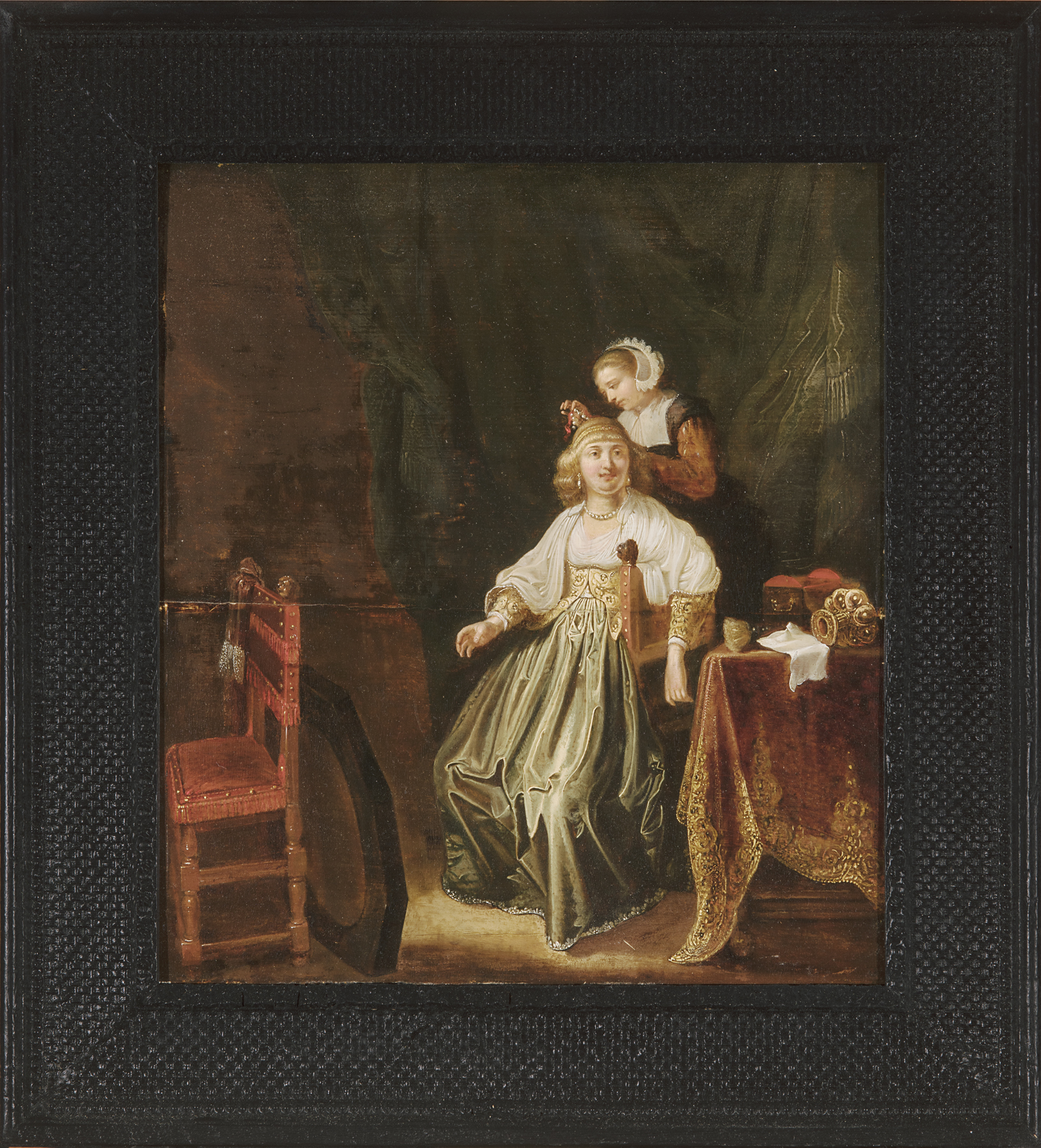two women in interior, unknown maker from the Netherlands
Artwork Overview
two women in interior
, 1800s
Where object was made: Netherlands?
Material/technique: panel; oil
Dimensions:
Canvas/Support (Height x Width x Depth): 40.6 x 35.6 cm
Canvas/Support (Height x Width x Depth): 16 x 14 in
Frame Dimensions (Height x Width x Depth): 55 x 50 cm
Frame Dimensions (Height x Width x Depth): 21 5/8 x 19 11/16 in
Canvas/Support (Height x Width x Depth): 40.6 x 35.6 cm
Canvas/Support (Height x Width x Depth): 16 x 14 in
Frame Dimensions (Height x Width x Depth): 55 x 50 cm
Frame Dimensions (Height x Width x Depth): 21 5/8 x 19 11/16 in
Credit line: William Bridges Thayer Memorial
Accession number: 1928.7148
Not on display
If you wish to reproduce this image, please submit an image request



